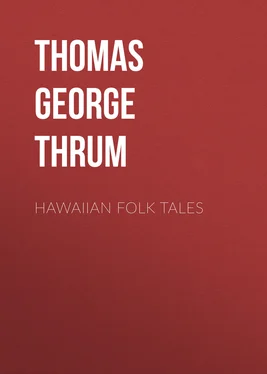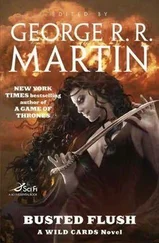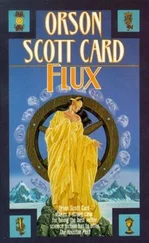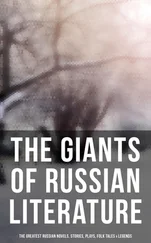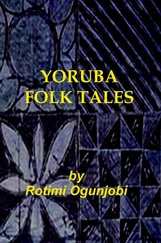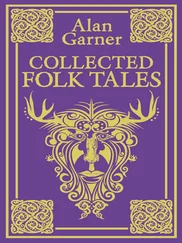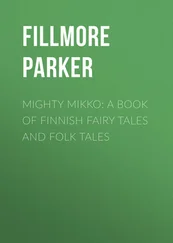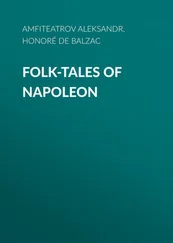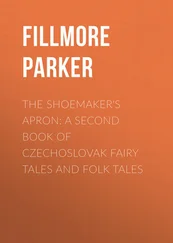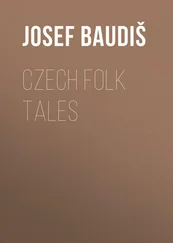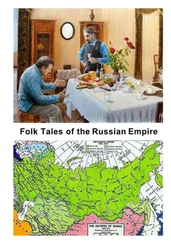Thomas George Thrum - Hawaiian Folk Tales
Здесь есть возможность читать онлайн «Thomas George Thrum - Hawaiian Folk Tales» — ознакомительный отрывок электронной книги совершенно бесплатно, а после прочтения отрывка купить полную версию. В некоторых случаях можно слушать аудио, скачать через торрент в формате fb2 и присутствует краткое содержание. Жанр: Старинная литература, foreign_antique, Сказка, на английском языке. Описание произведения, (предисловие) а так же отзывы посетителей доступны на портале библиотеки ЛибКат.
- Название:Hawaiian Folk Tales
- Автор:
- Жанр:
- Год:неизвестен
- ISBN:нет данных
- Рейтинг книги:4 / 5. Голосов: 1
-
Избранное:Добавить в избранное
- Отзывы:
-
Ваша оценка:
- 80
- 1
- 2
- 3
- 4
- 5
Hawaiian Folk Tales: краткое содержание, описание и аннотация
Предлагаем к чтению аннотацию, описание, краткое содержание или предисловие (зависит от того, что написал сам автор книги «Hawaiian Folk Tales»). Если вы не нашли необходимую информацию о книге — напишите в комментариях, мы постараемся отыскать её.
Hawaiian Folk Tales — читать онлайн ознакомительный отрывок
Ниже представлен текст книги, разбитый по страницам. Система сохранения места последней прочитанной страницы, позволяет с удобством читать онлайн бесплатно книгу «Hawaiian Folk Tales», без необходимости каждый раз заново искать на чём Вы остановились. Поставьте закладку, и сможете в любой момент перейти на страницу, на которой закончили чтение.
Интервал:
Закладка:
Hawaiian Folk Tales / A Collection of Native Legends
Preface
It is becoming more and more a matter of regret that a larger amount of systematic effort was not established in early years for the gathering and preservation of the folk-lore of the Hawaiians. The world is under lasting obligations to the late Judge Fornander, and to Dr. Rae before him, for their painstaking efforts to gather the history of this people and trace their origin and migrations; but Fornander’s work only has seen the light, Dr. Rae’s manuscript having been accidentally destroyed by fire.
The early attempts of Dibble and Pogue to gather history from Hawaiians themselves have preserved to native and foreign readers much that would probably otherwise have been lost. To the late Judge Andrews we are indebted for a very full grammar and dictionary of the language, as also for a valuable manuscript collection of meles and antiquarian literature that passed to the custody of the Board of Education.
There were native historians in those days; the newspaper articles of S. M. Kamakau, the earlier writings of David Malo, and the later contributions of G. W. Pilipo and others are but samples of a wealth of material, most of which has been lost forever to the world. From time to time Prof. W. D. Alexander, as also C. J. Lyons, has furnished interesting extracts from these and other hakus.
The Rev. A. O. Forbes devoted some time and thought to the collecting of island folk-lore: and King Kalakaua took some pains in this line also, as evidenced by his volume of “Legends and Myths of Hawaii,” edited by R. M. Daggett, though there is much therein that is wholly foreign to ancient Hawaiian customs and thought. No one of late years had a better opportunity than Kalakaua toward collecting the meles, kaaos, and traditions of his race; and for purposes looking to this end there was established by law a Board of Genealogy, which had an existence of some four years, but nothing of permanent value resulted therefrom.
Fornander’s manuscript collection of meles, legends, and genealogies in the vernacular has fortunately become, by purchase, the property of the Hon. C. R. Bishop, which insures for posterity the result of one devoted scholar’s efforts to rescue the ancient traditions that are gradually slipping away; for the haku meles (bards) of Hawaii are gone. This fact, as also the Hawaiian Historical Society’s desire to aid and stimulate research into the history and traditions of this people, strengthens the hope that some one may yet arise to give us further insight into the legendary folk-lore of this interesting race.
T. G. T. Honolulu, January 1, 1907.Note
In response to repeated requests, the compiler now presents in book form the series of legends that have been made a feature of “The Hawaiian Annual” for a number of years past. The series has been enriched by the addition of several tales, the famous shark legend having been furnished for this purpose from the papers of the Hawaiian Historical Society.
The collection embraces contributions by the Rev. A. O. Forbes, Dr. N. B. Emerson, J. S. Emerson, Mrs. E. M. Nakuina, W. M. Gibson, Dr. C. M. Hyde, and others, all of whom are recognized authorities.
T. G. T. Honolulu, January 1, 1907.I
Legends Resembling Old Testament History
In the first volume of Judge Fornander’s elaborate work on “The Polynesian Race” he has given some old Hawaiian legends which closely resemble the Old Testament history. How shall we account for such coincidences?
Take, for instance, the Hawaiian account of the Creation. The Kane, Ku and Lono: or, Sunlight, Substance, and Sound,—these constituted a triad named Ku-Kaua-Kahi, or the Fundamental Supreme Unity. In worship the reverence due was expressed by such epithets as Hi-ka-po-loa, Oi-e, Most Excellent, etc. “These gods existed from eternity, from and before chaos, or, as the Hawaiian term expressed it, ‘mai ka po mia’ (from the time of night, darkness, chaos). By an act of their will these gods dissipated or broke into pieces the existing, surrounding, all-containing po, night, or chaos. By this act light entered into space. They then created the heavens, three in number, as a place to dwell in; and the earth to be their footstool, he keehina honua a Kane. Next they created the sun, moon, stars, and a host of angels, or spirits—i kini akua—to minister to them. Last of all they created man as the model, or in the likeness of Kane. The body of the first man was made of red earth—lepo ula, or alaea—and the spittle of the gods—wai nao. His head was made of a whitish clay—palolo—which was brought from the four ends of the world by Lono. When the earth-image of Kane was ready, the three gods breathed into its nose, and called on it to rise, and it became a living being. Afterwards the first woman was created from one of the ribs—lalo puhaka—of the man while asleep, and these two were the progenitors of all mankind. They are called in the chants and in various legends by a large number of different names; but the most common for the man was Kumuhonua, and for the woman Keolakuhonua [or Lalahonua].
“Of the creation of animals these chants are silent; but from the pure tradition it may be inferred that the earth at the time of its creation or emergence from the watery chaos was stocked with vegetable and animal. The animals specially mentioned in the tradition as having been created by Kane were hogs (puaa), dogs (ilio), lizards or reptiles (moo).
“Another legend of the series, that of Wela-ahi-lani, states that after Kane had destroyed the world by fire, on account of the wickedness of the people then living, he organized it as it now is, and created the first man and the first woman, with the assistance of Ku and Lono, nearly in the same manner as narrated in the former legend of Kumuhonua. In this legend the man is called Wela-ahi-lani, and the woman is called Owe.”
Of the primeval home, the original ancestral seat of mankind, Hawaiian traditions speak in highest praise. “It had a number of names of various meanings, though the most generally occurring, and said to be the oldest, was Kalana-i-hau-ola (Kalana with the life-giving dew). It was situated in a large country, or continent, variously called in the legends Kahiki-honua-kele, Kahiki-ku, Kapa-kapa-ua-a-Kane, Molo-lani. Among other names for the primary homestead, or paradise, are Pali-uli (the blue mountain), Aina-i-ka-kaupo-o-Kane (the land in the heart of Kane), Aina-wai-akua-a-Kane (the land of the divine water of Kane). The tradition says of Pali-uli, that it was a sacred, tabooed land; that a man must be righteous to attain it; if faulty or sinful he will not get there; if he looks behind he will not get there; if he prefers his family he will not enter Pali-uli.” “Among other adornments of the Polynesian Paradise, the Kalana-i-hau-ola, there grew the Ulu kapu a Kane, the breadfruit tabooed for Kane, and the ohia hemolele, the sacred apple-tree. The priests of the olden time are said to have held that the tabooed fruits of these trees were in some manner connected with the trouble and death of Kumuhonua and Lalahonua, the first man and the first woman. Hence in the ancient chants he is called Kane-laa-uli, Kumu-uli, Kulu-ipo, the fallen chief, he who fell on account of the tree, or names of similar import.”
According to those legends of Kumuhonua and Wela-ahi-lani, “at the time when the gods created the stars, they also created a multitude of angels, or spirits (i kini akua), who were not created like men, but made from the spittle of the gods (i kuhaia), to be their servants or messengers. These spirits, or a number of them, disobeyed and revolted, because they were denied the awa; which means that they were not permitted to be worshipped, awa being a sacrificial offering and sign of worship.
Читать дальшеИнтервал:
Закладка:
Похожие книги на «Hawaiian Folk Tales»
Представляем Вашему вниманию похожие книги на «Hawaiian Folk Tales» списком для выбора. Мы отобрали схожую по названию и смыслу литературу в надежде предоставить читателям больше вариантов отыскать новые, интересные, ещё непрочитанные произведения.
Обсуждение, отзывы о книге «Hawaiian Folk Tales» и просто собственные мнения читателей. Оставьте ваши комментарии, напишите, что Вы думаете о произведении, его смысле или главных героях. Укажите что конкретно понравилось, а что нет, и почему Вы так считаете.
